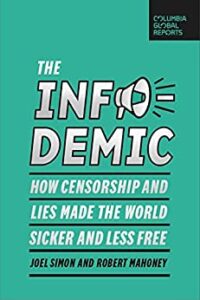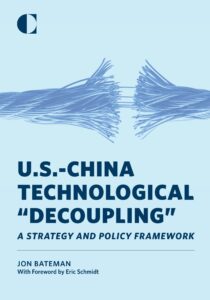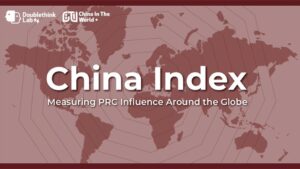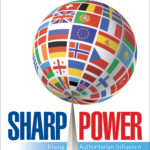 China’s authoritarian surveillance state crushed Covid-19 when it first appeared in Wuhan in early 2020 and trumpeted that success to the world. Now, more than two years later, the Omicron variant is running rings around Beijing’s zero-Covid strategy — and apparently nobody in power dare say so, according to Robert Mahoney, executive director of the Committee to Protect Journalists.
China’s authoritarian surveillance state crushed Covid-19 when it first appeared in Wuhan in early 2020 and trumpeted that success to the world. Now, more than two years later, the Omicron variant is running rings around Beijing’s zero-Covid strategy — and apparently nobody in power dare say so, according to Robert Mahoney, executive director of the Committee to Protect Journalists.
The very rigidities of the political system built by the Chinese Communist Party are hampering the country’s ability to handle the highly infectious Omicron variant with anything other than a game of lockdown Whac-A-Mole, he writes for CNN.
China took the lead as authoritarian governments in eighty nations have enacted restrictions on free speech and political expression that were falsely described as public-health measures, add Mahoney and Joel Simon, coauthors of The Infodemic: How Censorship and Lies Made the World Sicker and Less Free.
Authoritarian regimes called the censorship necessary and much of it temporary, but, in reality, the pandemic amplified or accelerated a shift toward authoritarianism that, according to the U.S.-based pro-democracy organization Freedom House, had been under way for fourteen years, they write for The New Yorker:
The repression was facilitated by the narrative, created and spread by China, that authoritarian governments were better equipped to respond to the pandemic, in part, because of their ability to control and manage information. This was in sharp contrast, China argued, to the deficiencies in the democratic world, particularly in the United States, which was mired in division and misinformation and struggled to muster an effective public-health response.
 Many U.S. policymakers believe that Beijing is proactively exporting its techno-authoritarian model to other countries, notes Jon Bateman, author of U.S.-China Technological “Decoupling”: A Strategy and Policy Framework, a new report from the Carnegie Endowment.
Many U.S. policymakers believe that Beijing is proactively exporting its techno-authoritarian model to other countries, notes Jon Bateman, author of U.S.-China Technological “Decoupling”: A Strategy and Policy Framework, a new report from the Carnegie Endowment.
For example, Chinese digital surveillance and censorship systems have been sold to repressive regimes like Zimbabwe and Venezuela, with the latter receiving “a commercialized version of China’s ‘Great Firewall.’ Washington fears that a “China model” of techno-authoritarianism will not only spread among authoritarian countries, but may also influence hybrid regimes and illiberal democracies, exacerbating and entrenching the global democratic recession, adds Bateman. RTWT
“The lesson is that we in Western society need to build up our defenses, and we have to find a way to explain it to our societies, because there is a cost connected to all of this,” Lipavsky said. “We are fighting for the very survival of the nature of the international order and the values that order is built on.”
 Expectations that China’s integration into the global economy would lead to liberalization at home and moderation abroad have proven overly optimistic, especially since President Xi Jinping rose to power in 2012. Instead, Xi has overseen a domestic crackdown on dissent, in order to shore up and expand the Chinese Communist Party’s control over every aspect of Chinese society, World Politics Review observes.
Expectations that China’s integration into the global economy would lead to liberalization at home and moderation abroad have proven overly optimistic, especially since President Xi Jinping rose to power in 2012. Instead, Xi has overseen a domestic crackdown on dissent, in order to shore up and expand the Chinese Communist Party’s control over every aspect of Chinese society, World Politics Review observes.
But do democracies face a strategic dilemma in challenging China’s aggressive expansionism?
“A serious effort to contain Chinese power would presumably require a big increase in consultation and support not just from Cold War allies and fellow democracies, but also from key regional powers like Vietnam, Myanmar, Thailand, and Singapore, regardless of their internal political systems,” argues Tablet’s Jeremy Stern:
Yet one of the most ingrained habits of the current administration—going back to its campaign in 2020—has been an incessant attempt to frame U.S. foreign policy not as a struggle to preserve U.S. interests but as a global showdown between liberal democracy and autocracy. In turn, the “battle of values” approach requires Washington to act against its own strategic interests by shunning flawed allies that would strengthen America’s position against China if only it wouldn’t chase them away.
Doublethink Lab has launched the first index to measure China’s global influence, with its first release assessing Beijing’s influence in 36 countries:

National Endowment for Democracy (NED)
Of the 36 countries evaluated as of April 22, 2022, Cambodia, Singapore and Thailand have been assessed as the top three countries most exposed to China’s influence [what the National Endowment for Democracy’s International Forum terms China’s sharp power], while Bosnia and Herzegovina, Colombia and Paraguay have been rated as least influenced. The top three domain areas in which China’s influence is assessed to be the strongest are in the foreign policy, domestic politics, and economy sectors, while military and society are rated as least influenced.
Beijing has stepped up its crackdown on civil society since Xi took power in 2012, tightening restrictions on freedom of speech and detaining hundreds of activists and lawyers, The Guardian adds.
The Hoover Institution’s project on China’s Global Sharp Power (CGSP) hosted a virtual event to discuss China’s Sharp Power in Africa: A Handbook for Building National Resilience, coauthored by Research Fellow Glenn Tiffert and Oliver McPherson-Smith. The event (video below), moderated by Senior Fellow Larry Diamond, featured additional commentary by Duignan Distinguished Visiting Fellow and NED board member Jendayi Frazer and H. Kwasi Prempeh, professor of law at Seton Hall University Law School and democratic governance expert from Ghana. The report is available here: China’s Sharp Power in Africa: A Handbook for Building National Resilience.







